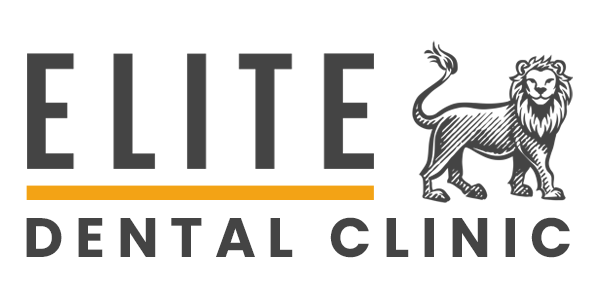Zirconia is one of the most popular materials that's used in cosmetic dentistry. If you are looking to get crowns, it is almost impossible not to hear anything about them during your research. Zirconia material has been used in dentistry for about 15-20 years and it was a good cosmetic dentistry material from day one, but it wasn't always on its best version during the process. In recent years, it has now become even better with technological developments. We will explain different types of zirconia materials and which one is the most suitable for today's cosmetic dentistry solutions.
The difference with metal-supported crowns
Previously, porcelain fused to metal crowns was used for aesthetic purposes. However, because of the metal's cosmetic disadvantages like, it's not translucent, opaque, and reflects light. Also, it may discolor the gum line, Porcelain fused to metal crowns are not suitable for the front teeth. For this reason, Zirconia material was introduced as an infrastructure material instead of metal under the porcelain layer. Because zirconia is white and translucent, it has a great aesthetic advantage compared to the Porcelain fused to metal crowns. This is called porcelain fused to Zirconia crowns as Layered Zirconia. This crown is a combination of a Zirconia infrastructure and a thin porcelain layer. These materials are bonded to each other.
Layered zirconia and its disadvantages
In the beginning, this layered zirconia material was a great improvement. But by this time we have seen some problems with Zirconia that we haven't seen so often with the metal-supported crowns. The most common problem is the separation of the porcelain layer from the zirconium with small fractures, which is called chipping. No matter how careful we were, with a certain statistic, some patients were coming up with this problem. This is because there is a poor connection between the zirconium and the porcelain layer. Secondly, zirconium is actually a very durable material with an average value of 1200 MPa. However, the layer of porcelain on it is only around 150 MPa. This means that a patient who grinds his teeth can easily break the porcelain layer on this zirconium. However, it was the most preferred dental tourism material due to its production speed and aesthetic advantage over porcelain fused to metal crowns.
Looking for a better material
As a clinic that is looking for long-term relationships with its patients and providing the best quality possible, such a problem like this was unacceptable. That's why we were looking for a material that is aesthetic, fast to produce, economical, and long-lasting.
The solution is Monolithic Zirconia!
The solution to our problem was the new Monolithic Zirconia. Monolithic zirconia restorations, manufactured exclusively by the CAD/CAM technology, and have considerable advantages such as requiring more conservative dental preparation and exhibiting satisfactory aesthetics. Digital smile design can be made before the procedure starts, we can take digital Impressions and produce better fitting crowns. It requires less laboratory time and fewer dental sessions, and as monolithic, they lack the unwanted complication of chipping.
The main difference of Monolithics material is that there is no layering technique and porcelain content in this material. All crowns are made from a single piece of zirconia. However, the difference compared to the past is that thanks to the multi-layer zirconia blocks, the color becomes transparent towards the cutting edge. This gives the final restoration an aesthetically similar appearance to the natural tooth. Previously, a layer of porcelain had to be added to achieve this transparency. Because the zirconia infrastructure is a very matte and monochromatic material. It does not meet the aesthetic requirements for making a direct crown. However, great results can be obtained with zirconias with a new gradient color transition and there is no need for a porcelain layer. Since this layer is absent, the patient does not experience problems such as chipping due to porcelain. Because there is no porcelain!
So here we know that there are 2 types of Zirconia Crowns. "Layered - old technique" and "Monolithic - new technology" Zirconias. Which ones are you going to get? Which one is better for you? Let's look more closely at the differences between these materials.
The differences between Layered & Monolithic
A fundamental difference is that Monolithic zirconias are made entirely by machines with a digital workflow. However, in layered zirconias, only the infrastructure layer is made by machines. The porcelain layer has to be made by a technician in hand. This reduces the production speed of the work and increases the chance of failure. In the case of replacing the crowns in the future, matching the color and shape with layered zirconias will be another problem.
Usage of Digital Smile Design Softwares
The design shown to the patient by using this software must be produced with monolithic zirconias. Layered Zirconias can not be 100% matching with the digital design, as it will be made by hand. The digital production techniques give us a chance to see the smile design in the mouth as well. We use 3d printed temporaries that can be tried in the patient's mouth before the final crowns are produced, and the patient is shown the same teeth to be made, preventing possible conflicts. The problem related to aesthetics and chewing is determined in advance, and the patient's desired teeth are produced.
This means, at the "3d Design Check" appointment, you can ask for any changes. For example, if you find some teeth longer than you want, we can make the changes before the production. This will enable us to be sure of the final design of the smile.
However, in layered zirconia, you can see these dimensions only after the work comes from the porcelain technician. If you came to Turkey only for 1 week, the technician will try to fix the aesthetic problems in your teeth by hand among the tens of jobs he is already doing, and the final result will be completely unpredictable. All aesthetic success will be left to variable values such as the technician's experience, current health, and busyness for that week. However, since monolithic crowns are produced by machines, these problems will not exist.
Which Monolithic Zirconia?
Finally, of course, not all multilayer zirconias are of the same quality. We trust Ivoclar Emax Prime Zirconia blocks for Monolithic Crowns. This material offers a wonderful transparent transition with its unique Gradient technology. Some of the different multilayer zirconias have a very sharp transition and it also doesn't provide a successful appearance. But with Emax prime, the translucency transition is smooth as well as on the natural tooth.
We believe in providing the best dental experience for the patients depends on the quality of material, professional and caring dental team, and fully integrated digital workflow for today's cosmetic dentistry.
If you have any questions, please contact us at contact@dentistkusadasi.net


